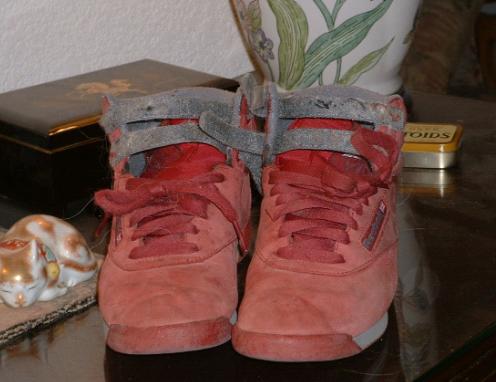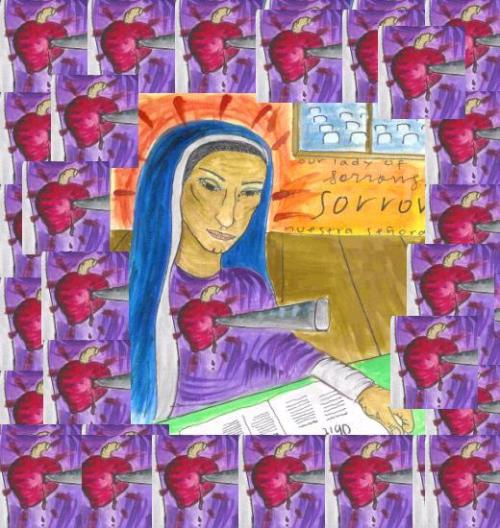Dark when I get up, dark when I drive home. Ghosts like this time of year. They can wander freely throughout the Universe, come and go, visit whoever they please. I haven’t seen any real ghosts in a long, long time. Yet I lay awake this morning from 4am to 6am, the time I got up to write this practice. I can’t help but think of Ada my grandmother when I think of ghosts. The way she came to see me in Minnesota after she died, made the trip all the way from Tennessee. I was a young woman the last time I saw her alive. She came to me in a ghost-like dream, told me she was alright, that she loved me, and said good-bye. It was the day after that I called Mom to see if she had died. I regretted not seeing her in person for so long; she let me know it was okay. I could feel at peace.
Leslea was more playful, the way she pulled at my toe and knocked the writing book off the shelf. It was around the time I was deeply immersed in my study with Natalie, debating whether to quit my day job for writing, haunted by the ghosts of what-if’s. Looking back, maybe I should have kept my day job. At least if I had wanted a secure financial future. But, then again, looking at the recession of the last few years, maybe it didn’t matter. I was happier leaving. And have made great strides in feeling secure as a writer, in setting up practices that sustain me, a community that holds me. That’s half the reason we started red Ravine.
I watch shows about the paranormal because they fascinate me. I’m fascinated because I’m curious about what happens after we die. I do believe that some souls are trapped between worlds. They wander and attach themselves to places where they lived in their physical lives. I also believe that most of us move on. To do different things in the next spiritual life. Maybe not all lives are spiritual. I happen to believe the work I do here now takes me to the next phase of whatever it is I’m supposed to be doing. This is all vague. Because it’s a Writing Practice and it’s the stream of my mind. It’s also vague because the afterlife is vague. No one really knows what happens after you die.
What if the afterlife is only what you believe it to be? That would make it different for each person. Some don’t believe in life after death at all. The physical death is the end. If I believed that, I would lose hope. That people can improve themselves and go on to something better. But back to Ghosts. I don’t summon them up, play the Ouija Board anymore. I don’t look for ghosts or ask them to appear. I don’t provoke or ask for signs. I might fall over if I saw a ghost of a person I didn’t know. Somehow, it doesn’t scare me to get visits from those I know who have passed to the other side. I count it as one of the many blessings of being in a body.
I want to be comfortable with my own death. But sometimes I don’t know. I’ve been thinking about it a lot this year because my brother has been very sick. His liver has been failing for some time. I was prepared for the worst. Then, miraculously, the week after I got back from my last writing retreat on Lake Michigan, I got a text from him that they had a liver. He was on his way to Philadelphia. Last night we IM’d over Facebook as if nothing had happened. Except the miracle that is his life. He is energetic and full of energy. The 45 staples come out on Tuesday, the day I arrive. The story could have ended differently. In this case, the ghosts are Wonder, Joy, fragments of Disbelief in how a life could move so quickly from Death’s door.
Oh, and Death. I’m not so sure about the sickle and scythe thing. It’s too daunting. Maybe you should lighten up your wardrobe. It’s scary to the living. Or maybe you already have and we all don’t know how to change your ghost of an image. Whatever you are, I don’t want to be afraid. Shadow and Light, they all play in the same forest of autumn leaves.
-Related to Topic post: Ghost Hunting — Tips & Tools Of The Trade

























